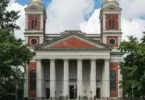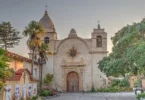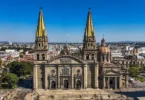Introduction
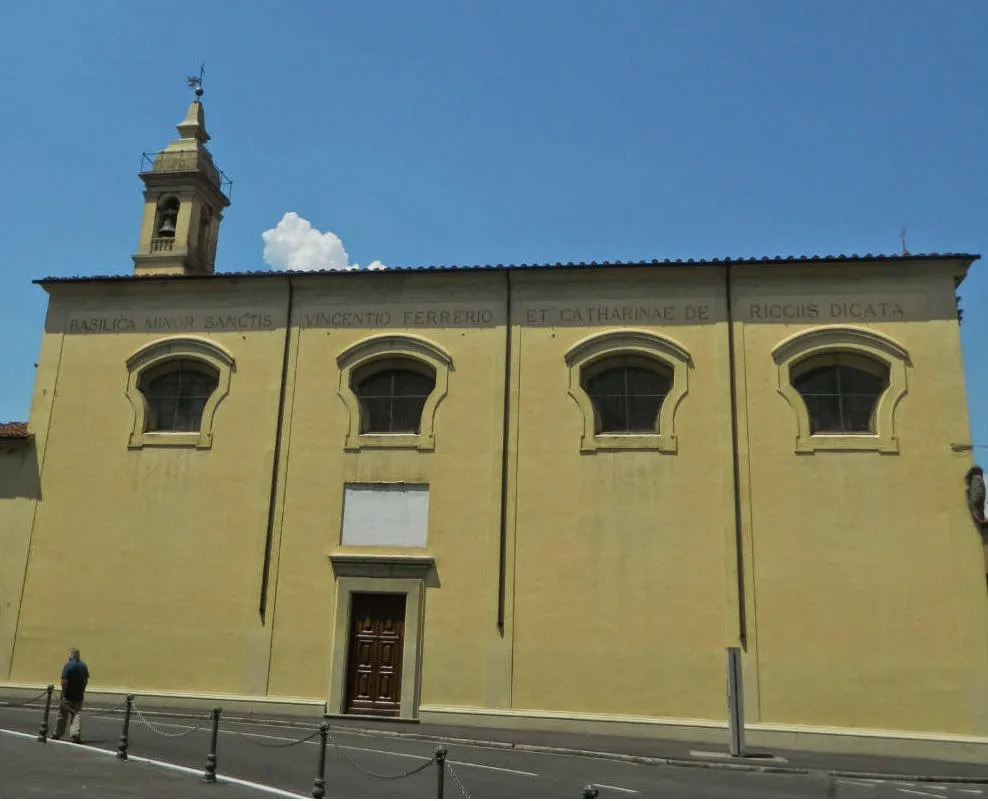
The Basilica of Saints Vincenzo and Caterina de’ Ricci, a Minor Basilica, is located in the heart of Prato, Tuscany, Italy. Situated in the picturesque Piazza San Domenico and Via San Vincenzo, the church stands prominently in front of the historic Church of San Domenico. This remarkable Catholic church was constructed over several centuries, with its origins dating from the 16th to the 18th century, reflecting a blend of architectural styles from the Renaissance to the Baroque period. The basilica is renowned not only for its architectural beauty but also for its spiritual significance. Adjacent to the church is a 16th-century monastery, which adds to the historical and cultural richness of the site, making it an important landmark in the region. The basilica is dedicated to Saints Vincenzo and Caterina de’ Ricci, figures of great religious devotion, and serves as a place of worship, reflection, and pilgrimage for both locals and visitors alike.
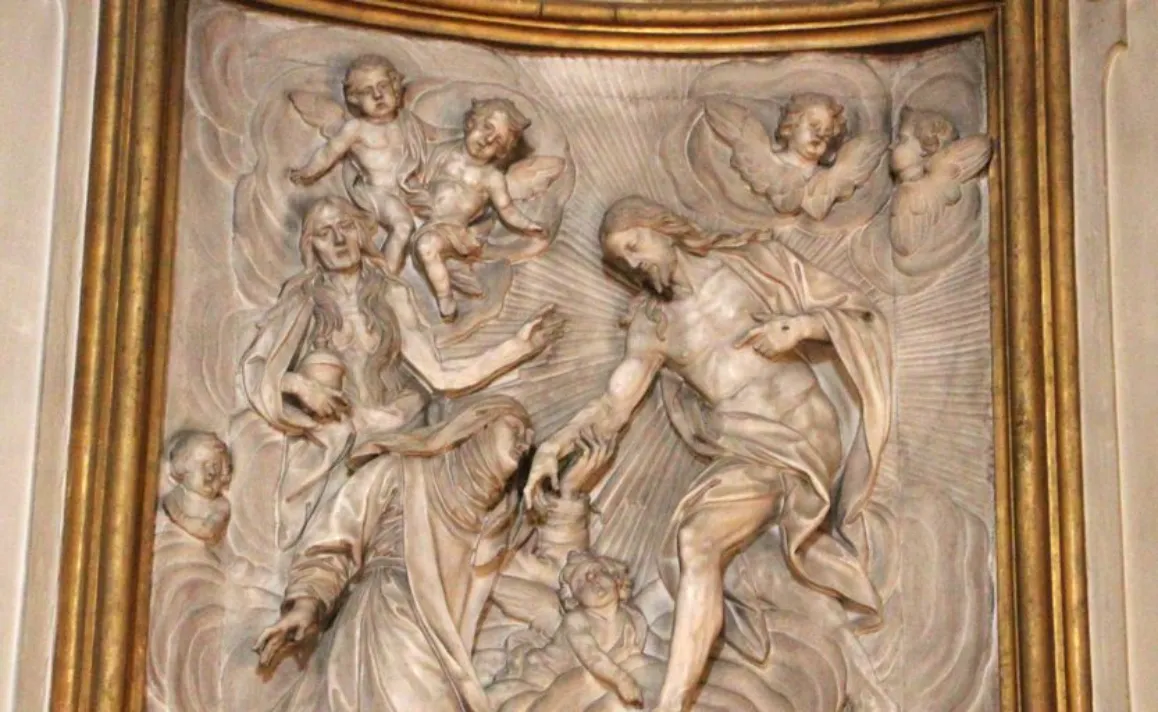
At the beginning of the 16th century, the Dominican female monastery dedicated to Saint Vincenzo Ferrer was established in Prato. This religious complex gained significant prominence in the middle of the century through the devoted efforts of Sister Caterina de’ Ricci, whose spiritual influence greatly impacted both the local community and the broader Tuscan and Florentine societies. Her mysticism was deeply revered, and she became one of the most significant examples of religious devotion in the region, especially before the veneration of Santa Maria Maddalena de’ Pazzi.
The church, initially constructed in the 16th century, was completed by the end of that century. However, it underwent significant renovations following the canonization of Caterina de’ Ricci, whose spirituality had left an indelible mark on the people of Tuscany. In 1732, Pope Clement XII beatified Sister Caterina, and by 1742, she was canonized as a saint. To honor her profound legacy, the church was thoroughly refurbished between 1732 and 1735, likely under the architectural guidance of Giovanni Battista Bettini and Girolamo Ticciati. These extensive renovations transformed the church into a magnificent Baroque masterpiece, reflecting the style of the period both in its exterior and interior.
The construction was undertaken not only to enhance the church’s aesthetic appeal but also to accommodate the growing importance of Saint Caterina de’ Ricci. After her canonization, her remains were interred beneath the central altar, elevating the church to the status of a Minor Basilica in recognition of her sanctity. Thus, the church, originally dedicated to Saint Vincenzo Ferrer, is now also dedicated to Saint Caterina de’ Ricci, whose life and works continue to inspire devotion. The basilica’s Baroque architecture and its role as the final resting place of Saint Caterina’s relics make it a significant spiritual and historical site, attracting pilgrims and visitors from around the world.
Architecture of Basilica of Saints Vincent and Catherine de' Ricci, Prato, Italy
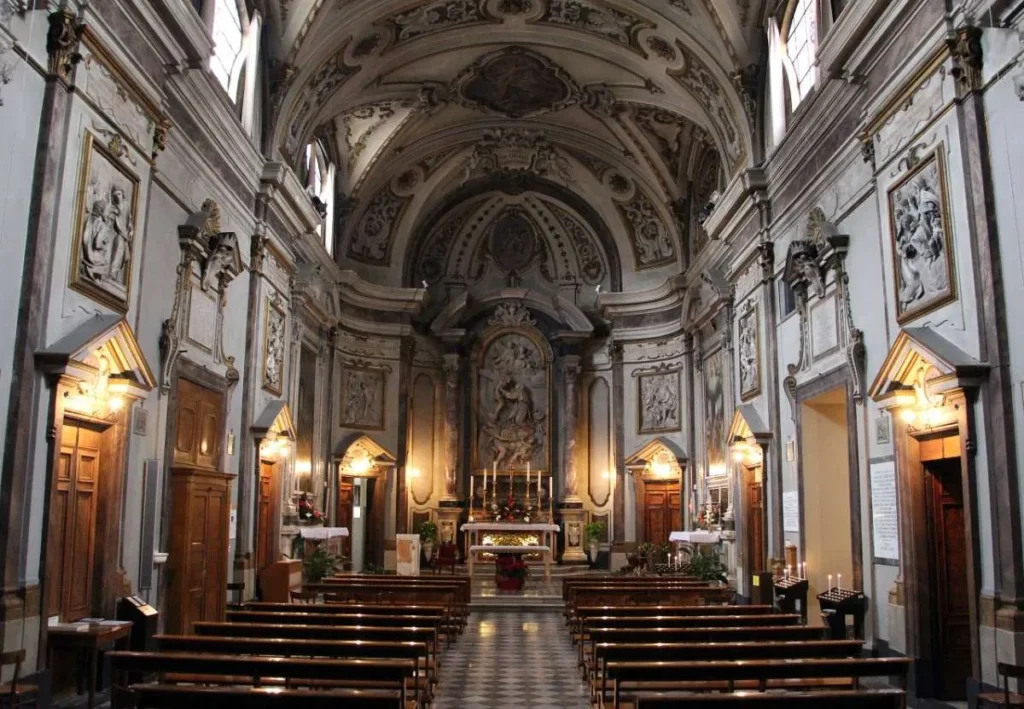
Architectural style: Baroque architecture.
Artistic Features and Interior of the Church
The Basilica of Saints Vincenzo and Caterina de’ Ricci is a prime example of late Baroque art, showcasing an extraordinary blend of frescoes, stuccoes, reliefs, altars, and occasionally intricate wallpapers, all harmoniously integrated into the church’s design. The church’s walls are framed with concave pilasters, seamlessly connecting to the apse. At the heart of the basilica lies a marble altar, which is adorned with a stunning white marble relief by Girolamo Ticciati, depicting Saint Catherine embraced by the Crucifix. Beneath the altar, a silver urn holds the incorrupt body of Saint Catherine, further enhancing the church’s sacred significance.
The walls of the church feature reliefs by Ticciati and Vincenzo Foggini, which illustrate various miracles associated with Saint Catherine, adding to the spiritual atmosphere. The elegant marble altars house significant works, including The Martyrdom of Saint Catherine of Alexandria by Vincenzo Meucci, a sixteenth-century Nativity by Michele delle Colombe, and additional paintings by Pucci, who also contributed to the frescoes on the ceiling, including the Glory of Saint Catherine surrounded by angels. In a small, distinguished chapel, visitors can admire a 15th-century marble relief of the Madonna and Child, crafted by the renowned artist Matteo Civitali. The intricate wooden furnishings of the nuns’ choir, dating back to the 16th century and visible through a grate, represent an exceptional example of craftsmanship. A plaque inside the church commemorates the visit of Pope John Paul II in 1986, marking an important moment in the church’s history.
Works of Art in the Church
The church is home to a number of important artworks, including a 16th-century Nativity by Michele delle Colombe, a 15th-century marble relief of the Madonna and Child by Matteo Civitali, and The Martyrdom of Saint Catherine of Alexandria by Vincenzo Meucci. The walls of the nave and the area above the altar feature framed relief sculptures by Girolamo Ticciati and Vicenzo Foggini (the latter being the son of the famed sculptor Giovanni Battista Foggini), which depict various miracles performed by Saint Catherine. The ceiling canvases, painted by Pucci, further enhance the church’s spiritual and artistic ambiance.
Monastery of San Vincenzo
The Nuns’ Choir and Sacred Spaces
Adjacent to the basilica lies the cloistered Monastery of San Vincenzo, founded in 1503 and later expanded in the second half of the 16th century, particularly during the time of Caterina de’ Ricci. Having entered the monastery at the age of thirteen, Saint Caterina de’ Ricci significantly influenced the monastery’s spiritual direction. Over time, she purified the religious life, distancing it from political and social elements and focusing entirely on mystical devotion. She experienced remarkable mystical events, including the stigmata, mystical marriage, and the embrace of the Crucifix between 1541-1543, which played a central role in her legacy. Her leadership, paired with the support of her “spiritual son” Filippo Salviati, allowed her to expand the monastery.
The atrium of the monastery leads to the ancient choir and the adjacent Chapel of the Madonna dei Papalini. This chapel houses a venerated maiolica bust of the Madonna from the early 16th century, with an 18th-century dress, believed to have miraculously protected the convent during the Sack of Prato in 1512. Spanish mercenaries reportedly spared the monastery due to their reverence for this image. Beneath the chapel, a papier-mâché rosette vault and a panel by Santi di Tito are located. This is also the place where Caterina de’ Ricci was buried until 1732.
The Monastic Choir and Artwork
Not far from the chapel is the monastic choir, built between 1558 and 1564, designed by Baccio Bandinelli. The choir is notable for its lunette vault and high walnut stalls dating from 1564. The space is decorated with valuable 16th-century paintings by Michele delle Colombe, Ridolfo del Ghirlandaio, and Francesco Brina. A particularly significant feature is the artwork of Saint Dominic and Saint Vincent Ferrer on the right wall, executed between 1559 and 1561. The choir also houses 17th-century paintings by Simone Pignoni and Lorenzo Lippi.On the altar, visitors can view a 16th-century wooden crucifix, flanked by two large altarpieces by Michele delle Colombe from 1576, depicting the Assumption and scenes from the Passion of Christ.
The Saint's Chapel and Relics
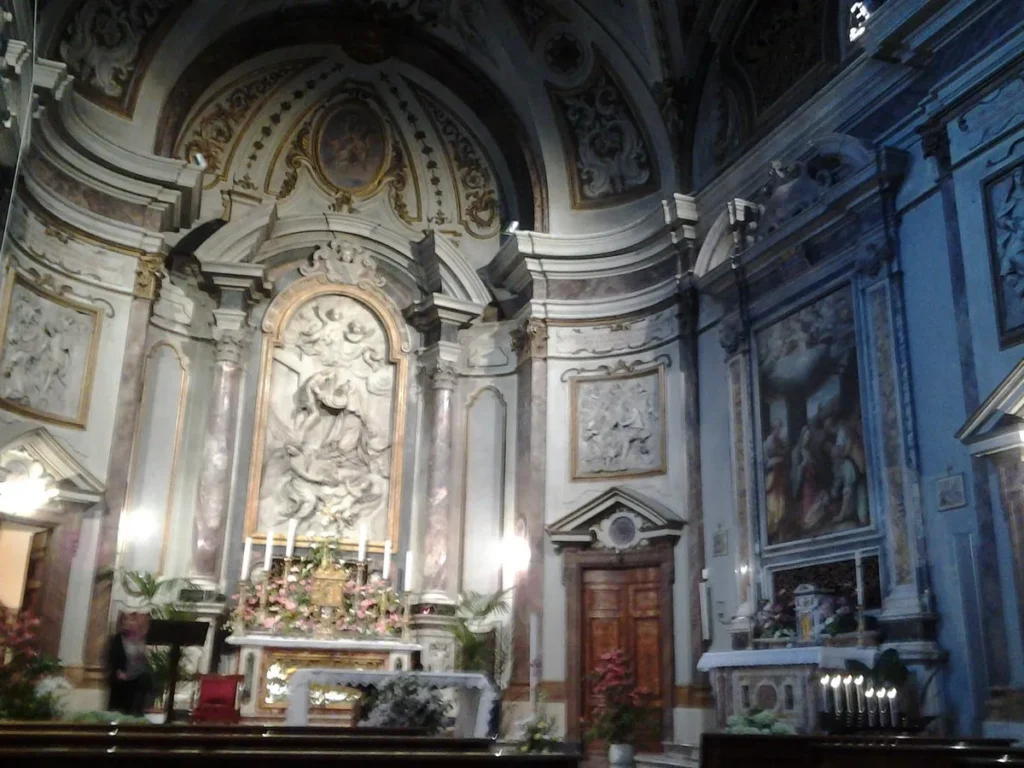
Adjacent to the monastic choir is a chapel housing the urn of Saint Caterina, decorated with paintings by Gian Domenico Ferretti. This area, along with other rooms such as the workroom, wardrobe, and pharmacy, is generally not open to the public. However, during certain occasions, visitors may gain access to some upper-floor cells, including the Cell of the Transit, which contains memories and relics of the Saint. One of the most revered sites is the Chapel of the Crucifix Embrace, where the famous miracle of Caterina de’ Ricci embracing the Crucifix took place. The chapel houses the wooden crucifix from the early 18th century, preserved within an altar-reliquary. Adjacent to this chapel is the Chapel of the Relics, further enhancing the sacred nature of the site.
Garden and Additional Chapels
In the garden of the monastery, which now partially serves as a retirement home, is the Chapel of Madonna di Loreto (1559-1560). This chapel, designed to replicate the measurements of the Holy House of Loreto, is adorned with a beautiful panel by Michele Tosini. The chapel is another notable feature of the monastery, showcasing the blend of art and spirituality that defines the site.
Adjacent Monastery and Legends
The Monastery of San Vincenzo was founded in 1503 and significantly expanded during the life of Caterina de’ Ricci. The Papalini Madonna Chapel is one of the monastery’s most significant sites. Legends suggest that the chapel houses a 16th-century maiolica bust that miraculously saved the monastery from destruction during the Sack of Prato in 1512, when Spanish mercenaries spared the convent due to their reverence for the image. The altar of the chapel features two panels by Michele delle Colombe from 1576, depicting the Assumption and scenes from the Passion of Christ. The chapel also houses notable works by artists such as Simone Pignoni (depicting Saints Catherine and Tecla), Lorenzo Lippi (St. Francis de Sales), Ridolfo del Ghirlandaio (Madonna and Child), and from the studio of Giovanni Battista Naldini. Additionally, there is an altarpiece by Michele Tosini located in the garden of the Chapel of Madonna di Loreto. Some of the convent’s rooms are closed to visitors, preserving the privacy and sanctity of the monastery’s sacred spaces.
Feast Day
Feast Day : Saint Vincent Ferrer’s feast day: April 5th
Saint Catherine de’ Ricci’s feast day: February 13th.
The Basilica of Saints Vincent and Catherine de’ Ricci in Prato, Italy, is dedicated to both Saint Vincent Ferrer and Saint Catherine de’ Ricci. The feast days for these two saints are observed on April 5th for Saint Vincent Ferrer and February 13th for Saint Catherine de’ Ricci. Although the basilica is dedicated to both, the feast day of the basilica is often celebrated on April 5th, in honor of Saint Vincent Ferrer, one of its patrons. However, the feast of Saint Catherine de’ Ricci, celebrated on February 13th, also holds great significance, particularly within the Dominican tradition, as she is venerated for her deep spirituality and mystical experiences.
Church Mass Timing
Monday : 8:00 AM , 5:30 PM
Tuesday : 10:30 AM , 5:30 PM
Saturday : 5:30 PM
Sunday : 8:00 AM , 5:30 PM
Church Opening Time:
Monday : 7:30 am – 12:30 pm., 3:30 pm – 6:00 pm.
Tuesday : 7:30 am – 12:30 pm., 3:30 pm – 6:00 pm.
Wednesday : 7:30 am – 6:00 pm.
Thursday : 7:30 am – 12:30 pm., 3:30 pm – 6:00 pm.
Friday : 7:30 am – 12:30 pm., 3:30 pm – 6:00 pm.
Saturday : 7:30 am – 12:30 pm., 3:30 pm – 6:00 pm.
Sunday : 8:00 am – 10:30 am., 4:00 pm – 7:00 pm.
Contact Info
Address :
Via S. Vincenzo, 9, 59100 Prato PO, Italy.
Phone : +39 0574 24706
Accommodations
Connectivities
Airway
Basilica of Saints Vincent and Catherine de’ Ricci, Prato, Italy, to Amerigo Vespucci Airport, distance between 19 min (16.6 km) via A11/E76.
Railway
Basilica of Saints Vincent and Catherine de’ Ricci, Prato, Italy, to Pratignone Via di Pratignone, distance between 14 min (9.7 km) via Viale Leonardo Da Vinci/SS719.


